Geothermal power generation is a low-cost, low-emissions way to generate a lot of electricity from a renewable resource.
So why aren’t there more geothermal plants in the United States?
We’ll discuss this question plus everything you need to know about geothermal energy in this quick guide to the 10 advantages of geothermal energy.
What is Geothermal Energy?

Geothermal energy is the heat produced by the molten core under the earth’s crust. This heat is continuously produced through the decay of radioactive materials such as uranium and potassium.
Tectonic plate boundaries and places where the crust is thin have the highest underground temperatures and you don’t have to drill as far to reach the heat.
The type of geothermal plant constructed depends on the type of geothermal heat. Basically, the plant uses steam to turn turbines that generate electricity.
A small borehole is drilled to a hot water or dry steam reservoir which pushes up through the pipe, spins the turbine, then is piped back into the same reservoir to be reheated.
With nearly zero emissions, it is not surprising that geothermal energy is considered one of the most environmentally friendly alternatives to fossil fuels.
Geothermal energy is an effective, inexhaustible, and renewable resource. Let’s take a closer look at the 10 advantages of geothermal energy.
Economic Advantages of Geothermal Energy
In general, the economic advantages of geothermal energy focus on the low cost of power production and jobs created in the local economy.
The cost to install a geothermal power plant is steep. It costs about $2,500 per kW to install, and about .03 cents per kW to maintain.
However, once it’s up and running it produces some of the cheapest power available in the United States. It usually sells for around 3 to 5 cents per kWh.
Because it is clean, renewable, and scalable, the investment in geothermal power generation has been an economic boon to many areas.
How Efficient is Geothermal Energy?
Geothermal power plants average 12% energy conversion efficiency worldwide. However, that isn’t the full story on geothermal energy.
The conversion rate of any type of power plant measures the amount of energy output in comparison to the potential energy going through the system.
So, in comparison to the amount of dry steam, boiling water, or heated working medium going through the geothermal plant, the amount that gets turned into electricity varies from 1% at the lowest to 21% at best.
That doesn’t mean that electricity only trickles out of the geothermal plant. It means that the plant gets scaled up accordingly to provide the needed electricity.
However, geothermal plants operate cleanly at up to 98% capacity. This is outstanding, and the highest of any power plant in the world.
It’s on 24/7 though it does require more maintenance when it’s operated at 98% capacity, so most geothermal plants hum along at 90% to 95% capacity.
So while it may only be capturing electricity from around 12% of the fluid moving through the system, it’s incredibly reliable and it keeps pumping out the needed electricity rain or shine.
10 Advantages of Geothermal Energy
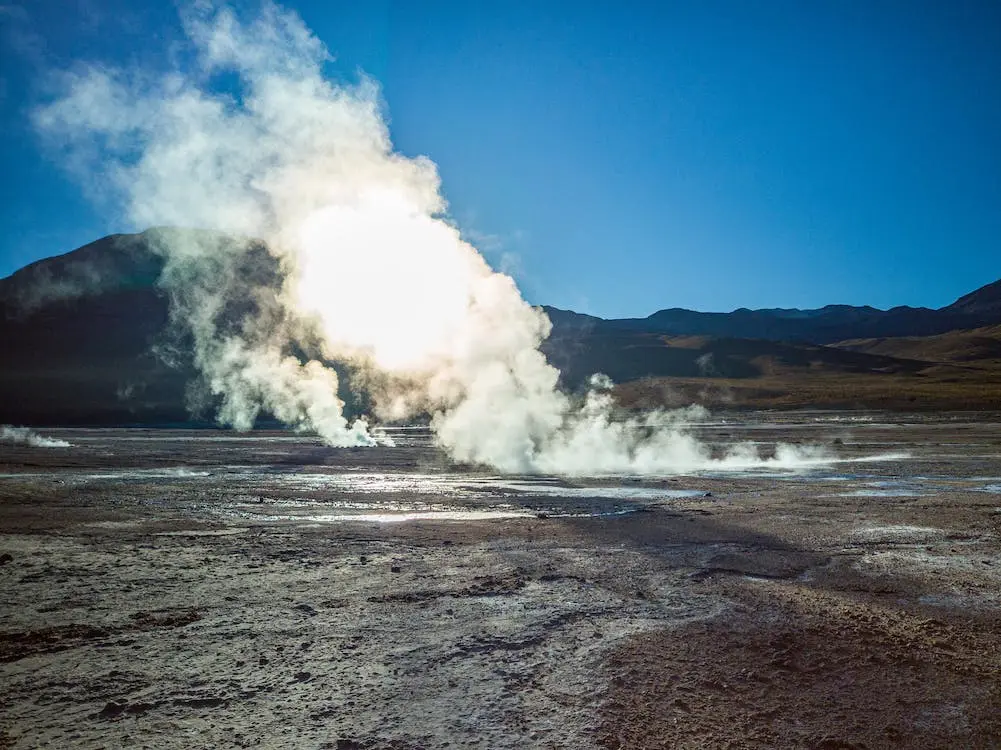
- Environmentally Friendly
- Geothermal Plants are Compact
- High Reliability
- Cheap Power
- Huge Energy Reservoir
- Geothermal Plants are Scalable
- Supports Local Economic Development
- Geothermal Plants are Self-Sustaining
- Geothermal Energy is Homegrown
- Geothermal Energy is Versatile
1. Environmentally Friendly
Geothermal plants emit 0.1 to 0.2 pounds of carbon dioxide for every kilowatt-hour. That’s a fraction of the carbon dioxide emitted from coal-powered power plants.
The hot water pumped from underground by geothermal heat pumps usually contains high levels of sulfur, salt, and other minerals.
However since most geothermal plants have closed-loop systems, in which the water extracted is pumped back into the geothermal reservoir, there is no water or air pollution.
Geothermal plants emit zero nitrogen oxides, very little sulfur oxide, and very low amounts of carbon dioxide.
These gases are not emitted during production because there is no combustion but are natural constituents of all geothermal reservoirs.
2. Geothermal Plants are Compact and Clean
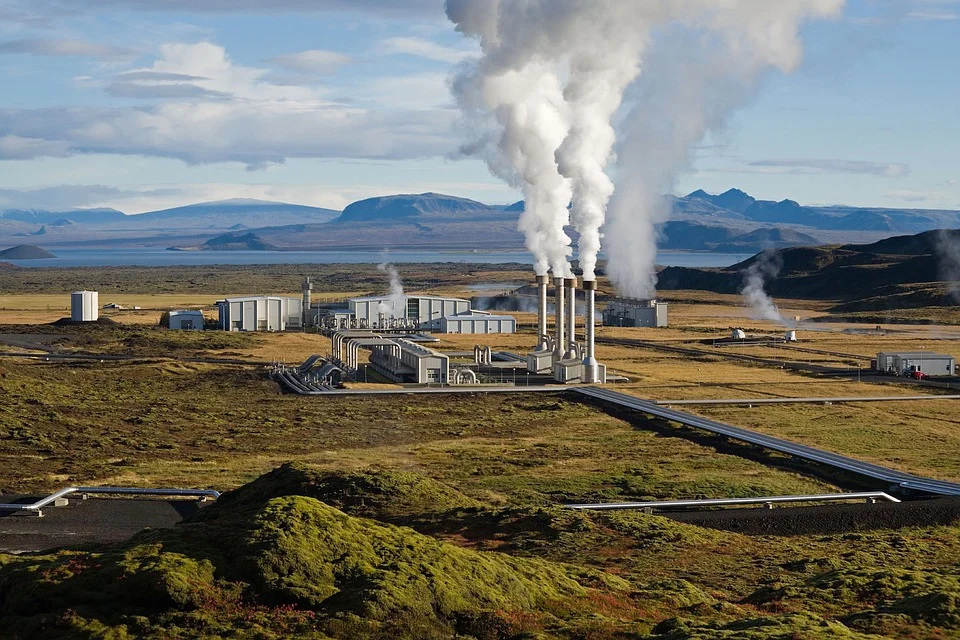
Geothermal energy has the smallest land-use footprint per kilowatt of any energy generation technology currently available.
An entire geothermal field may use 1-8 acres of land per megawatt compared to 5-10 acres for nuclear energy and 19 acres for coal.
The state of Nevada saved over 3 million barrels of oil in gross power output from its collection of geothermal plants located near natural hot water and steam pockets around the state.
3. Geothermal Energy has High Reliability
Geothermal energy is not the most efficient type of thermal energy production. In fact, it’s only about 12% efficient – lower than all other types of thermal energy plants.
However, it’s about 90% reliable, which is fantastic in comparison with all other types of power generation plants.
That’s because it’s based on earth’s activity which happens whether we harness it or not.
Geothermal plants can operate 24 hours a day regardless of weather patterns and environmental conditions.
They’re also not subject to the voltage swings and unpredictability that plague other renewable energy sources.
The cycle of hot water and steam rising to the crust of the earth in hot pools, geysers, and steam vents don’t stop. As long as the geothermal plant is connected to the reservoir it can generate electricity.
4. Geothermal is Cheap Power
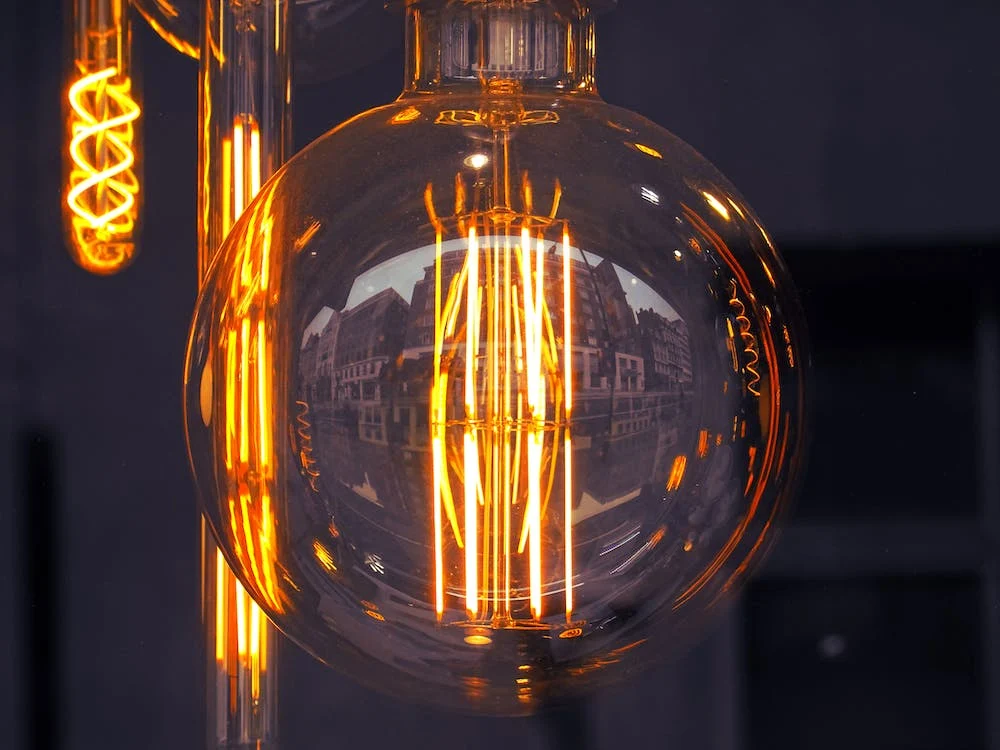
According to the Office of Energy Efficiency and Renewable Energy, the cost to buy geothermal energy ranges from $0.01 to $0.03 per kWh.
That’s a fraction of the cost to buy coal power which is about 3.2 cents per kWh.
5. Huge Energy Reservoir
The hot water pockets and dry steam pockets in the earth’s crust are replenished through the natural heat exchange in the earth.
This energy reservoir is one of our best renewable resources aside from sunlight, wind, and water.
6. Geothermal Plants are Scalable
Geothermal plants are scalable, meaning that a small plant can be economically built for applications within a community or utility-scale facilities on the multi-MW scale can also be economically built.
This is a good argument in favor of using geothermal pockets for community electricity or even large factories in the area.
The size of the geothermal plant can be customized for the application, creating minimal environmental disruption.
7. Geothermal Supports Local Economic Development
Harnessing natural resources provides jobs in the local community for the construction and maintenance of the power plant.
Many of the geothermal resources that can be used for energy production are located in rural areas. Geothermal development brings jobs and tax revenue that provide significant economic advantages.
Plus the residents enjoy cheaper electricity which is always appreciated.
Some of the different types of jobs created by geothermal energy production include careers in science and technology, management and administrative support, construction, manufacturing, and operations.
The geothermal industry as a whole is creating approximately 1.7 jobs for every megawatt of power production capacity in ongoing support work.
Additional streams of income include business development, tourism, and government grants for geothermal development that benefit students, universities, and state programs.
8. Geothermal Plants are Self-Sustaining
Geothermal plants don’t need fossil fuels to operate.
Regardless of the type of geothermal plant that’s operating, part of its electricity generation power itself. The rest is available for sale to the community.
This makes it a fantastic source of alternative energy because once it’s up and running it’s self-sustaining.
The future of renewable energy around the world might still be geothermal energy even though it isn’t currently available everywhere.
New technology is being developed to pump water towards the earth’s core, superheat it, then harvest the steam to generate electricity.
9. Geothermal Energy is Homegrown
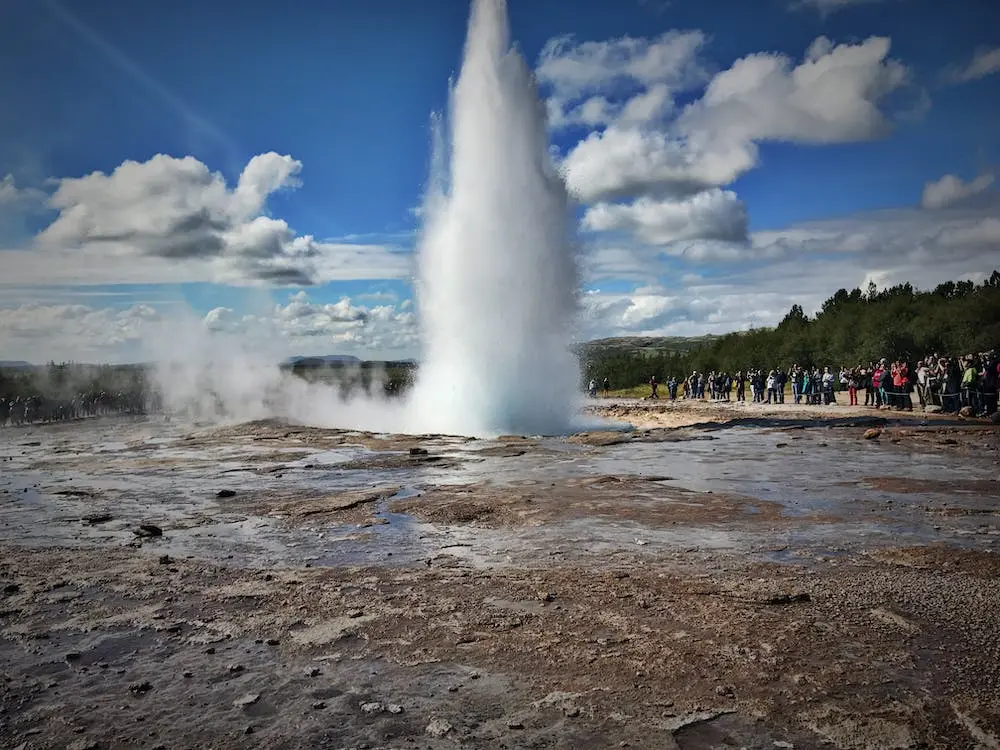
No matter what side of the massive energy debate you stand on, most of us can agree that depending on other countries to supply our fuel needs makes us economically and politically vulnerable.
Germany’s push to carbon neutrality was just derailed by its dependence on gas imports from Russia.
While they’re determined to meet their carbon-neutrality deadline of 2045, they’re bringing coal, oil, and natural gas power plants back online to meet the nation’s energy needs in time for winter.
Most nations see the importance of exploiting their own natural resources to meet their energy needs.
Because geothermal is clean and homegrown, the United States is investing more money in developing efficient geothermal plants and expanding the power output from this renewable resource.
10. Geothermal Energy is Versatile
Geothermal energy can be used in several different ways.
- Steam can be directly captured and used to turn power generation turbines
- Hot water can be compressed until it flashes then the steam used to turn turbines
- Hot water can be used to heat fluids with a lower boiling point to generate steam
- Hot water can be directly pumped into buildings and under roads for heat
- A geothermal heat pump can be used to heat and cool homes and offices
There are quite a few ways to harness the natural heat of the earth, and the stability of temperature just below the surface of the earth. All of these help us to save money and conserve natural resources.
4 Types of Geothermal Plants
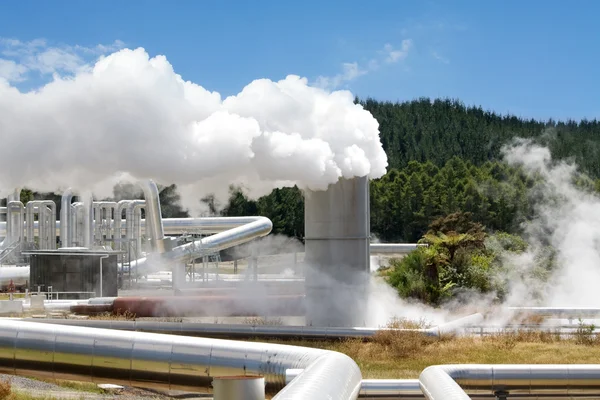
There are 3 types of geothermal plants, and they all work in basically the same way. Each one generates steam which turns a power generation turbine. How they get the steam is the difference.
Binary Steam Geothermal Power Plants
These are the most commonly used plants in the United States because they can use water that’s not hot enough for the other two types of plants.
- Binary steam plants have 2 fluids that they work with. 1 is the hot water pumped from the underground reservoir. 2 is a “working fluid” that has a low boiling point.
- The working fluid is usually a non-corrosive fluorocarbon or hydrocarbon.
- The hot water is too cool to produce steam on its own, but it is used to heat the secondary fluid until it becomes steam.
- The pressurized steam from the working fluid is used to turn the turbines to generate electricity.
- The hot water is pumped back into the underground reservoir to be reheated and used again.
This type of power plant keeps the working fluid separate from the hot water so there is no contamination. There is very little greenhouse gas produced by this type of plant.
Flash Steam Geothermal Power Plants
This type of geothermal power plant has access to underground reservoirs of superheated water.
Because the water is compressed underground it does not boil and create steam until it reaches the surface. As the pressure decreases above ground, the water expands allowing it to “flash” into steam.
This steam is used to turn electricity generation turbines.
The unflashed water is returned to the underground reservoir for reheating and the water that condenses from the steam is also returned underground.
This is a clean, renewable source of electricity.
Dry Steam Geothermal Power Plants
Dry steam power plants are rare because they are located on pockets of superheated steam.
The only dry steam plant in the United States is The Geysers in California.
This type of plant funnels the superheated steam from the earth directly into pipes that contain turbines to generate electricity.
After the dry steam has powered the turbine it can be released into the atmosphere or pumped back into the steam reservoir for reheating.
Enhanced Geothermal Systems (EGS)
These are the most expensive types of geothermal plants to install, but they’re receiving the most research because they can be installed anywhere.
Here are the key takeaways for EGS systems:
- Subsurface heat is present at every location on planet earth
- EGS systems tap into that heat
- Boring creates subsurface fractures to create exposure to the earth’s heat
- Water is pumped into the fractures to be heated
- The hot water is extracted and used to create steam to turn generator turbines
- Sometimes the process creates a pathway for existing steam or hot water to escape
Because the hot water is not naturally close to the surface, this is an expensive type of power plant to build and maintain.
However, it opens up the possibility of bringing clean, renewable energy to many places where other resources are scant.
What is a Geothermal Heat Pump?
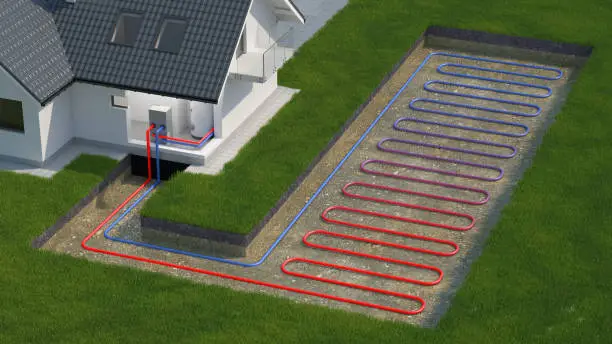
A geothermal heat pump is used to heat and cool homes and office buildings. It consists of pipes that are buried below the frost line where the soil remains a constant temperature year-round.
These pipes are pressurized with water and a pump circulates the water through the building and back underground.
During the summer, when the ground is cooler than the air, the water is cooled underground. As it circulates into the home it supplements the cooling system saving money and energy.
During the winter when the ground is warmer than the air, the water is heated underground.
As it circulates into the home it is further heated by the heating system, making the home comfortable while saving money and energy.
Geothermal heat pumps are often confused with geothermal power plants, but they’re two different things.
A geothermal heat pump is a small unit that uses the constant temperature of the earth to create a passive heating and cooling system. A geothermal power plant uses steam to generate electricity.
Is Geothermal Energy Renewable?
Yes, geothermal energy is renewable.
One of the perceived disadvantages of geothermal energy is that it will increase the earth’s cooling and cause the core to solidify faster than it would if it was left alone.
Though there is evidence that the earth is cooling and some worry that tapping into geothermal reservoirs is causing it to cool faster than ever.
However, there is still enough geothermal energy to go around.
The key is to invest in developing new geothermal power plants that can use cooler geothermal reservoirs to produce steam – like the binary power plants.
As long as geothermal power plants pump water back into the earth to be reheated, this natural resource will keep renewing to be used again.
Final Thoughts
Geothermal energy creates little to no emissions, and the environmental impacts are significantly less than current methods of energy production.
From an economic standpoint, geothermal energy is very practical and feasible.
Geothermal energy could completely replace oil and natural gas heating and cooling systems in many areas and reduce annual costs and CO2 emissions, as well as other dangerous pollutants.
By increasing the availability of geothermal energy and other natural resources, countries can improve their ability to control their economic future and improve their national security.
At the same time, using geothermal resources helps to conserve oil and natural gas resources for higher value uses while using much less overall.
What do you think of geothermal energy? Do you live in an area that enjoys this natural resource? Let us know in the comments below!
